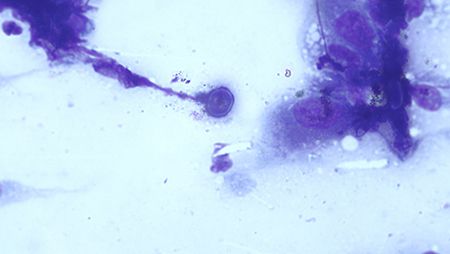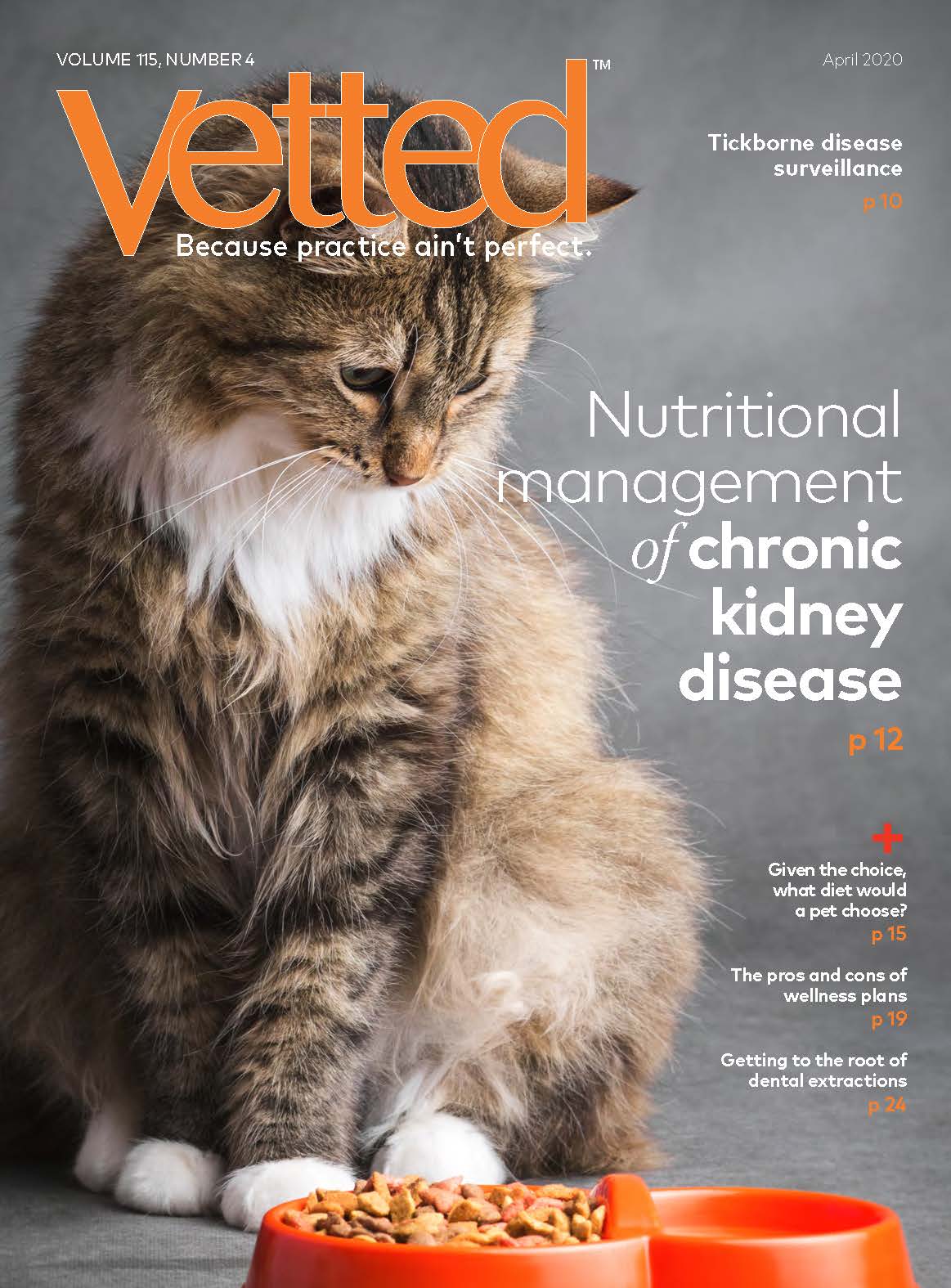Image Quiz: Cytologya Doberman with weight loss, lethargy and lesions on his nose
Below is a skin cytology from a 3-year-old male neutered Doberman pinscher with cutaneous lesions. Whats going on?
This patient is an active, outdoor dog that has been historically healthy until the gradual onset of weight loss and lethargy over the last few weeks. This particular dog spends much of his time in the woods behind the owner's house. The owners are extremely concerned about the recent development of ulcerative lesions and draining tracts on the nasal planum and paws.
Image courtesy of Dr. Kaitlyn Bello, BluePearl Veterinary Partners.

What's your diagnosis?
A. Histoplasma capsulatum
B. Blastomyces dermatitidis
C. Cryptococcus neoformans
D. Pemphigus foliaceus
Correct answer:
B. Blastomyces dermatitidis
This is a case of cutaneous and systemic blastomycosis caused by Blastomyces dermatitidis. This patient likely became infected via direct inoculation, inhalation of spores from its wooded backyard environment, or both. This dimorphic fungus lives in damp environments, especially those containing decaying organic matter. Cytologic examination of Blastomyces dermatitidis reveals broad-based, budding yeast. You will also see a thick, refractile double cell wall. Direct smears or aspirates of affected tissue are appropriate samples to be viewed cytologically to obtain this diagnosis. Biopsies of affected tissue can also be submitted, which will likely reveal nodular to diffuse, suppurative to pyogranulomatous dermatitis with associated budding yeast or septal hyphae.
Blastomyces can cause cutaneous or systemic disease. Common clinical signs include lethargy, weight loss, dyspnea, coughing, uveitis and cutaneous lesions. Cutaneous lesions can include papules, nodules, plaques, subcutaneous abscesses, ulcerations and draining tracts. If blastomycosis is suspected, performing thoracic radiographs and a thorough ophthalmic examination are essential.
Multiple therapeutic options are available, with the current medication of choice being oral itraconazole. Fluconazole and terbinafine work well in conjunction with one another, as well as ketoconazole in conjunction with amphotericin B. Fluconazole as a single line of therapy is also an option, though course of treatment is usually longer with this drug than with itraconazole. Systemic treatment should last for at least 60 days, being sure to treat 30 days beyond resolution of clinical signs.
Dr. Kaitlyn Bello practices at BluePearl Veterinary Partners in Franklin, Tennessee.
